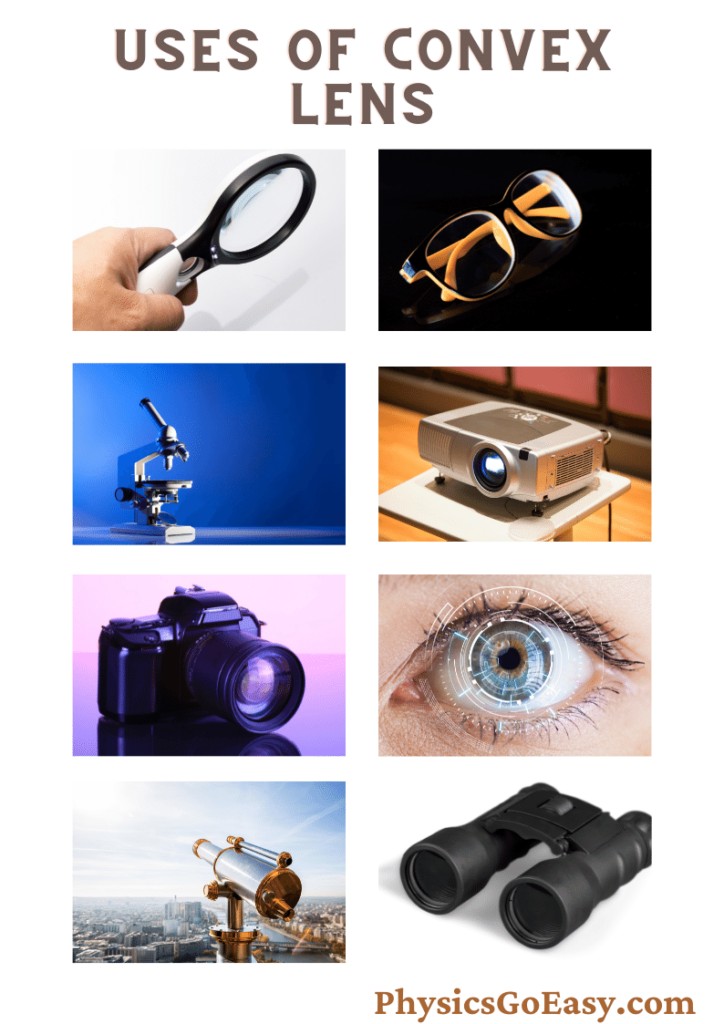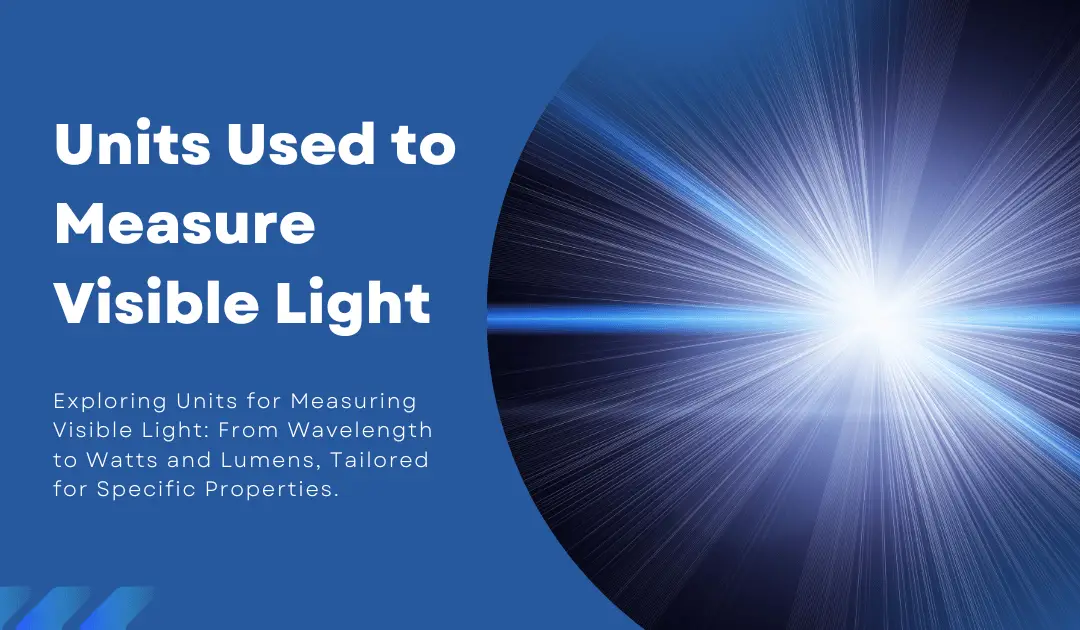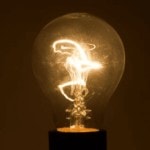This article is about convex lens examples and their uses in daily life. Here we will try to list and give a detailed explanation of some of these examples.
Convex Lens Examples
A convex lens can be used in a variety of applications, such as
- Magnification glass
- Eyeglasses for correction of hypermetropia
- Microscope
- Projectors
- Cameras
- Human Eye
- Telescope
From the above list, we can say that convex lenses are used across a wide range for example they can be useful in space exploration (using telescopes) as well as in microscopically small surroundings (using microscopes).
Each one of these uses is explained further in detail in this article. Let us now understand what a convex lens is before learning about the applications of convex lenses in daily life.
What is a Convex Lens?
A convex lens is also known as a converging lens. It is a lens that is thicker in the middle than the edges. In passing through a convex lens, the rays of light converge, or we can say that they are brought closer together at a particular point.
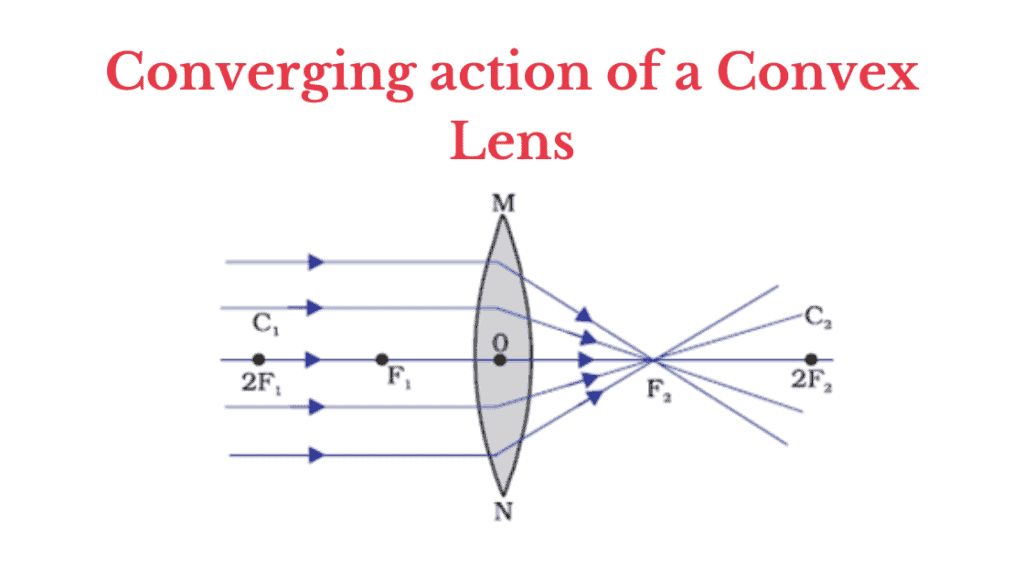
We already know that a convex lens is a lens that converges light rays falling on it. Consequently, when parallel light beams are refracted, they all converge at one point, which is known as the principal focus of the lens (or focal point). This happens because of the convex lens’s shape and the difference in refractive index between air and the lens.
The following are some applications for convex lenses.
Real life examples of convex lenses
1. A Magnifying Glass
A magnifying glass is a convex lens that magnifies an object. It manipulates our eyes by presenting a magnified image. The lens is frequently mounted in a handle frame. A magnifying glass may focus light, such as the sun’s rays, to create a hot area for fire starting.
A magnifying glass concentrates all of the incident light rays on a single point, which is known as the focal point. The focal point of the lens is located in front of it. When the distance between the object and the lens is smaller than the focal length of the lens, the image of the object is magnified.
Maximum magnification is obtained when an object is placed at the focal point. Proper magnification requires bringing the glass close to the object, but not too close.
2. Eyeglasses for farsightedness
When the natural lens in the eye can’t focus light on the retina, it’s difficult to see objects. Hyperopia is the difficulty faced by a person to see objects close to the eye. But they can see far away objects clearly. This ailment is also known as farsightedness (long-sightedness, hypermetropia).
This issue can occur as a result of the ciliary muscles’ failure to alter the focal length of the eye lens. The objects’ light is focused beyond the retina. So there is a need for light beams to be converged and focused on the retina. A convex lens placed in front of the eye converges light rays to focus on the retina.
3. Optical Microscopes
Microscope convex lens
The optical microscope is often known as a light microscope. A light microscope magnifies a specimen using focused light and lenses. The power to magnify objects is provided by a convex lens. Optical microscopes are the oldest type of microscopes, possibly invented in the 17th century.
A simple microscope magnifies an object’s image. It is mostly based on the light microscope in terms of design and functionality.
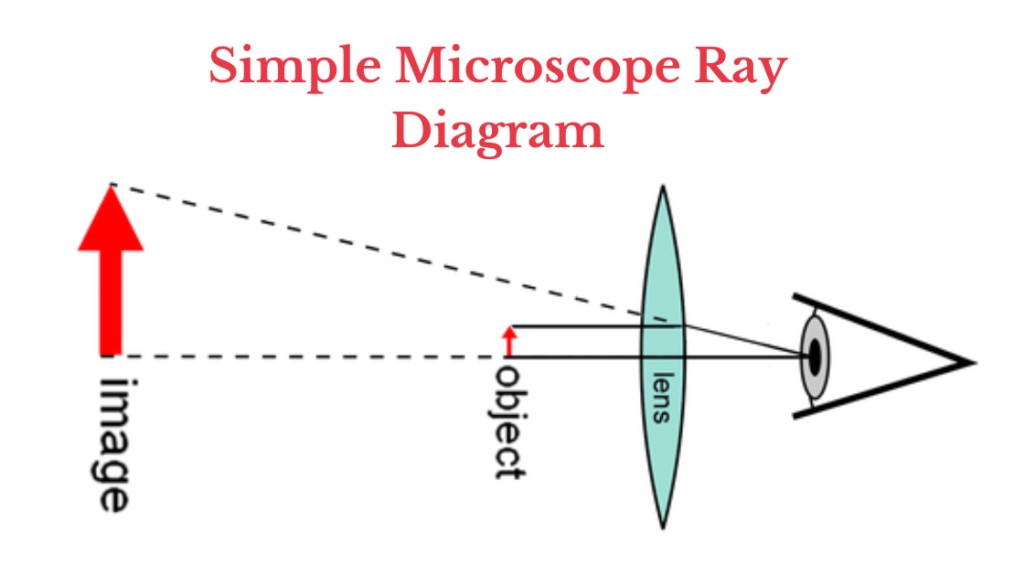
When an object is put inside the focal length of a convex lens, it produces a virtual, erect, and enlarged picture. A basic microscope is made with a convex lens.
Compound microscopes combine two or more convex lenses for better magnification. A compound microscope is typically used for seeing materials at high magnification (usually 40 – 1000x).
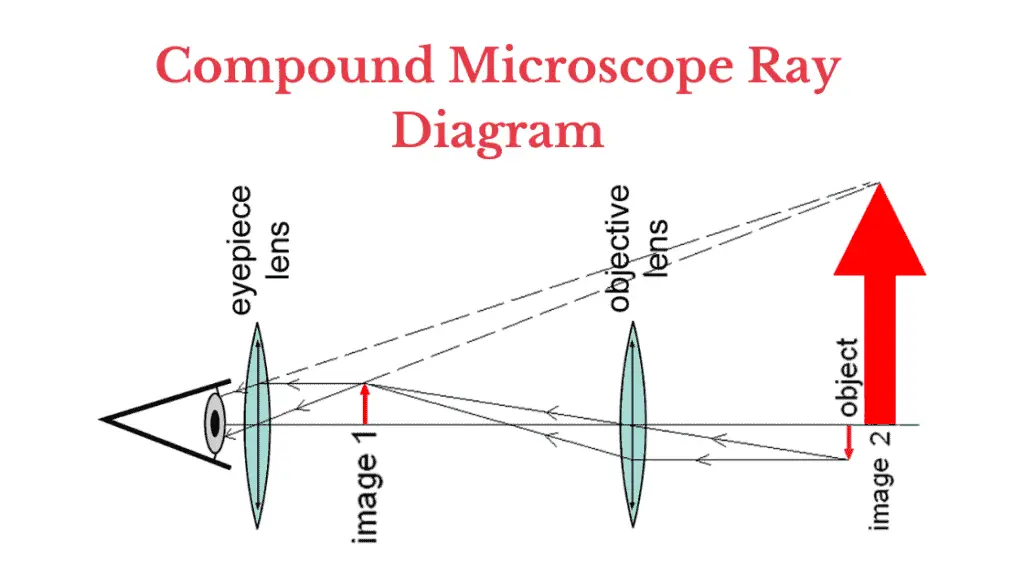
Fountains of Bryn Mawr, CC BY-SA 3.0, via Wikimedia Commons4. Projectors
Convex lenses are used in projectors. Projectors are optical devices that can project images or films onto big screens. A projector works by magnifying the picture or video on the film.
When an object is positioned between one and two focal lengths away from the lens, the image created by the lens is magnified, real, and inverted.
In a film or data projector, this image is created on a screen as a result of the projection. The film must be placed into the projector upside down in order for the projected image to be displayed correctly.
5. Convex lens in camera
Camera lenses are usually convex. They are used in cameras to focus an image and magnify it at the same time. The light rays reflected from the object enter the camera. Here the convex lens adjusts the strength of light and focuses it on the sensitive film behind the lens.
The magnification of the camera can be adjusted by adjusting the convex lens on the camera.
By doing this action, we are able to improve the magnification by altering the focal point. Convex lenses are used in a similar fashion by video cameras, webcams, and other such image-capturing devices.
6. Human Eye
The human eye is one example of a convex lens in operation. The convex lens of the eye is made of a transparent, soft, and flexible jelly-like material composed of proteins. Because the eye lens is flexible, it can change shape to focus light on the retina.
While focusing, ciliary muscles adjust the thickness of the eye-lens. These ciliary muscles can even modify the focal length of the eye’s convex lens. The lens of the eye converges all of the rays originating from the object, resulting in a real and inverted image of the object on the retina.
7. Telescope
An optical telescope is a telescope that collects and focuses light, primarily from the visible portion of the electromagnetic spectrum, in order to produce a magnified image for immediate visual observation, to take a photograph, or to collect data using electronic image sensors.
Telescopes use a plano-convex lens. Using these, you may be able to magnify the image while also bringing it closer to your eyes at the same time. Various lenses are used, allowing you to easily detect the image while enlarging it.
Outdoor activities like astronomical observation, ornithology, pilotage, hunting, etc, as well as indoor and semi-outdoor activities such as watching performances or sports, are among the many uses for optical telescopes (including monoculars and binoculars).
The poster below shows various use cases of convex lenses that we encounter in our day-to-day life.
